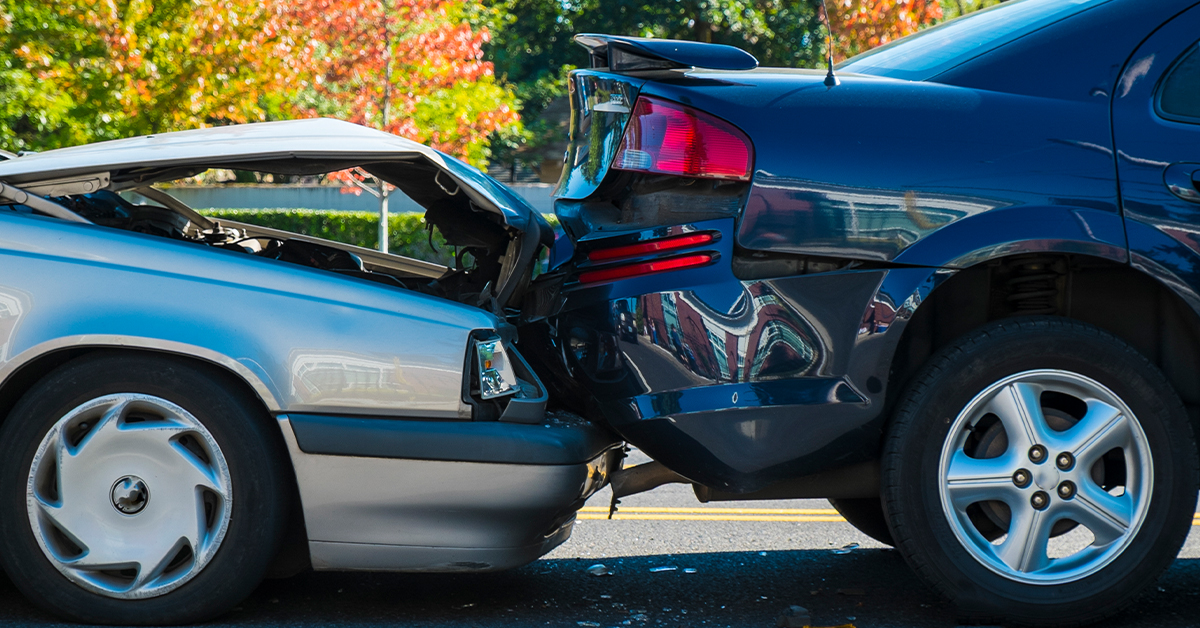Accidents are aggravating primarily because they are unavoidable. You could be the most careful driver and still get into an accident as a result of others’ negligence. Accounting for nearly 29% of all accidents that result in serious injury, rear-end collisions are one of the most common forms of accident.
What’s more, not only can rear-end collisions injure you, in some serious cases, they can even lead to fatalities. Even then, people know very little about the appropriate steps to take after such an accident occurs.
Some of the common causes leading to rear-end collisions include distracted driving, tailgating, drunk driving, and speeding — all negligent actions. In other instances, rear-end collisions can occur due to interference caused by weather conditions, slippery roads, or a third-party vehicle.
Of course, we suggest that you file a personal injury lawsuit against the party responsible for the accident. But even before you do that, here are a few things that you should do.
1. Seek Immediate Medical Attention
According to the National Transportation Safety Board, nearly 950,000 people end up injured in rear-end collisions every year.
If you find yourself in a rear-ended accident, the first thing you need to do is seek medical attention. You need to be proactive about this, even if you can not spot a visible injury right away. More often than not, you may find yourself nursing an internal injury or concussion, that can lead to serious consequences if you do not get it checked immediately.
Medical reports are also crucial as evidence of the accident, and any injuries resulting from it. Your injury reports can also act as corroborating evidence for your narrative of the accident, so it is important to preserve them. Save everything starting from the initial diagnosis to the follow-up prescriptions.
2. Carry out the Due Police Procedure
You might have a hundred reasons for not wanting to call the police after your accident, but you should never miss this step. Even if you think you may have contributed to the accident, ensure to call the police right after the accident so that it can be thoroughly investigated.
More importantly, whether you want to claim compensation from your insurance company or file an injury lawsuit, police reports will play a vital role in the process. Police reports are not admissible in civil courts but they can aid the process of attaining your desired settlement.
If you are sure that you did not play a role in causing the accident, police reports can prove your stance, and even help expedite your insurance claim.
3. Gather Necessary Evidence
As someone who has been in a rear-end collision, you must start putting evidence together before you leave the accident spot. The first thing you should do is click pictures of the vehicle damage as well as the car that caused the accident.
You can also take photos and videos of your injuries as well as the surroundings so that you can provide complete context on the accident. Once you seek medical attention, file all the medical reports and prescriptions in an organized manner. The accident reports and police reports should be filed and preserved, as well.
If possible, go a step further and collect the name and contact details of the other driver, witness statements, and their contact information.
4. Contact Insurance Company
Once you have gathered the necessary information and sought medical attention, the next step is to claim compensation. Contact your insurance company to let them know about the accident.
In some cases, the insurer of the other driver might claim responsibility and compensate for the damages. But even in that case, your insurance provider will need to process a collision claim or challenge the other insurer for getting compensation.
In rare instances, the insurer of the other driver might side with their policyholder and deny coverage. In such cases, your insurer may sue the other insurance company or reach a settlement that is mutually agreeable to all parties. If this option also does not work out for you, you can choose to sue the other party’s insurer to get compensation.
5. Find a Personal Injury Lawyer
In case you are not able to recover the damages incurred to you through the insurance company, the next ideal option is to file a personal injury lawsuit.
A personal injury lawyer who specializes in auto accident cases can help you calculate the extent of damages and the amount of compensation you should be claiming. Some of the considerations that you should keep in mind include lost wages, diminished earning potential, non-economic damages, and any special costs that you may need to incur due to your injury.
You must ensure that you find a lawyer who can help you not only with the settlement process but also with the trial — if it comes to that.
Need Help After a Rear-End Collision?
Even the most cautious drivers can find themselves in a rear-end collision. Sometimes another driver’s negligence — like distracted driving, tailgating, or speeding — is to blame. Other times, a momentary lapse of your own can lead to an accident. Regardless of how it happens, what matters most is taking the right steps immediately afterward to protect your health and your rights.
If you’ve been rear-ended, document the scene, collect evidence, seek medical care, and contact an experienced attorney as soon as possible. Some rear-end collisions can cause serious injuries such as traumatic brain injuries that may not be obvious right away, making it even more important to act quickly.
At Abeita Law, we understand how overwhelming the aftermath of an accident can be. Our team will review your case, explain your legal options, and help you pursue the full compensation you deserve.
Contact us today for a free consultation about your rear-end collision and take the first step toward recovery and peace of mind.
